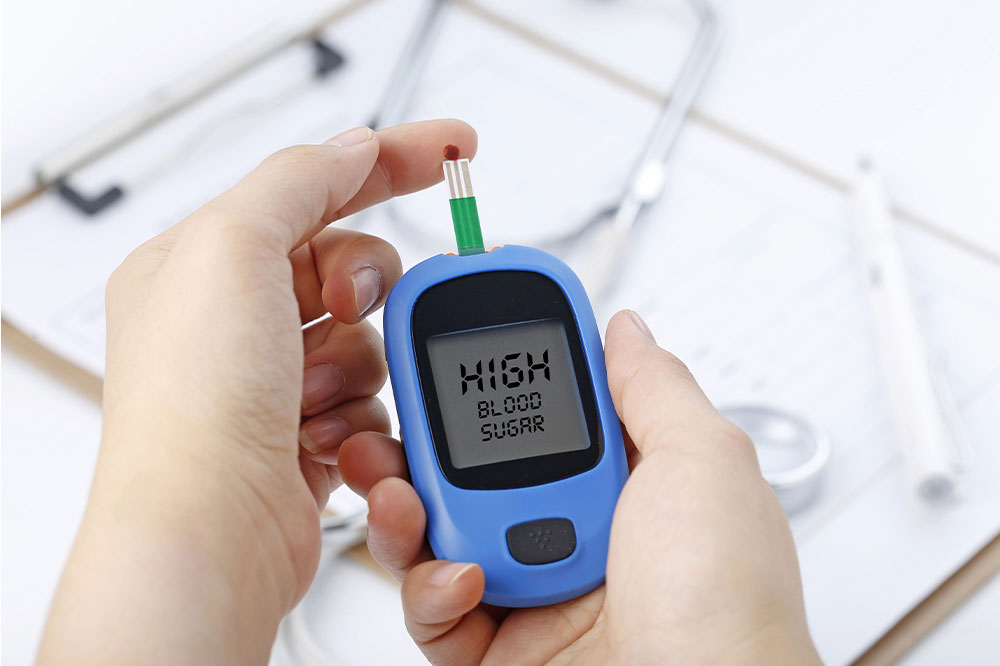
High blood sugar – Signs, causes, and management
High blood sugar, or hyperglycemia, is common in people with diabetes. It is diagnosed when a person’s fasting blood glucose levels are 126 mg/dL or higher. While hyperglycemia has no immediate consequences, it can lead to several health complications with time, including heart and kidney disease, if not controlled. Luckily, the condition can be managed using simple treatments and home remedies. Read on to learn about the signs, causes, and management of high blood sugar.
Signs and symptoms
Continuous or undiagnosed high blood sugar can lead to several symptoms. A few examples include:
Increased thirst
Frequent urination
Fatigue
Frequent and recurrent infections
Confusion
Managing these symptoms is necessary to prevent the condition from progressing and preventing complications. One should visit a healthcare professional to identify the cause if the signs persist. Doctors may recommend a blood test to identify high blood sugar and develop a suitable treatment plan.
Causes
The body’s inability to produce or use insulin properly causes blood sugar levels to rise. Many other physiological and lifestyle factors also contribute to the problem. These include:
Consuming too many sugary beverages and desserts
Dehydration
Gum disease
Underlying diseases
Lack of sleep
Little or no physical activity
Stress
A meal plan rich in carbs, starch, and sugar
Poor dental hygiene
Specific treatments
Treatment
Doctors might recommend insulin therapy if one’s body produces insufficient insulin. Patients should talk to an expert and follow the correct dosage to control blood sugar. Food changes and exercise might be recommended if one’s glucose levels are not too high.
Individuals who notice a rise in blood sugar levels for the first time should visit a doctor for further examination. One should not use random diabetes treatments as it can cause sugar levels to drop too low, which can be dangerous.
Foods to eat
A food’s glycemic index (GI) indicates how it will affect blood sugar. Foods with low GI are best suited to maintain and regulate blood sugar as they digest slowly. Some low-GI foods that help with blood sugar control are:
Bread made with whole wheat, spelt, rye, or rice
Fresh fruits, except for watermelon, pineapple, dried fruits, and fresh juice
Sweet potatoes
Yam
Oatmeal
Millets
Brown rice
Raw almonds, cashew, walnuts, pecans, and peanuts
Sunflower seeds
Beans
Garlic
Fatty fish
Yogurt
Individuals should pair low-GI foods with nutrients like chromium, magnesium, and fiber to create a balanced meal plan.
Home remedies
Long-term hyperglycemia can affect blood vessels, leading to cardiovascular diseases like stroke and heart attack. It can also damage organs like the kidneys, eyes, and gums. While one must continue to treat high blood sugar as planned by the doctor, a few lifestyle changes can also help. Here are some home remedies for blood sugar control:
- Exercise for 30 minutes every day or engage in a suitable physical activity.
- Eat multiple smaller meals instead of two or three large ones.
- Stay hydrated by drinking water to dilute the sugar.
- Get professional help to manage stress or spend time practicing yoga and meditation.
- Sleep for a minimum of seven to eight hours every day.




